Article Outline
3. Objectives and research questions
Declaration of competing interest
Figures and tables
Volume 11 Issue 1 pp. 23-38 • doi: 10.15627/jd.2024.2
Improving Natural and Artificial Lighting in Coastal Architecture Classrooms: Insights and Applications
Tachaya Sangkakool,∗,a Zulfiqar Ali Jumanib
Author affiliations
a Rajamangala University of Technology Srivijaya, Faculty of Architecture; Muang District, Songkhla, Thailand
b Faculty of Business Administration and Accounting, Khon Kaen Business School, Khon Kaen University, Thailand
*Corresponding author.
tachaya.s@rmutsv.ac.th (T. Sangkakool)
zulfiqar@kku.ac.th (Z. A. Jumani)
History: Received 31 December 2023 | Revised 22 February 2024 | Accepted 12 March 2024 | Published online 31 March 2024
Copyright: © 2024 The Author(s). Published by solarlits.com. This is an open access article under the CC BY license (http://creativecommons.org/licenses/by/4.0/).
Citation: Tachaya Sangkakool, Zulfiqar Ali Jumani, Improving Natural and Artificial Lighting in Coastal Architecture Classrooms: Insights and Applications, Journal of Daylighting 11 (2024) 23-38. https://dx.doi.org/10.15627/jd.2024.2
Figures and tables
Abstract
This research examines the natural and artificial lighting performance comparison in an architecture classroom at a university in southern Thailand and gives principles for enhancing lighting design. The sample for the study was classroom spaces. The efficacy of natural and artificial lighting was studied using static and dynamic models, and data were obtained using a 4 in 1 multi-function environmental meter at various times of the day. The current study adopted the IESNA (Illuminating Engineering Society of North America) and CIBSE (Chartered Institution of Building Services Engineers) lighting standards for the performance comparison analysis. The results showed that the natural light in the classrooms did not satisfy the standards for lighting levels. In contrast, the artificial lighting was more effective but raised some issues with uniformity and glare. The study offers recommendations for improving lighting effectiveness, maximizing natural light, reducing energy consumption, improving the uniformity of artificial illumination, addressing issues with various classroom lighting designs, and creating more comfortable and realistic learning environments.
Keywords
Natural light, Artificial light, Lighting design, Lighting efficiency
1. Introduction
Lighting in educational environments is more than a mere functional necessity; it is a critical factor that shapes learning experiences and outcomes. The positive effects of proper lighting, such as enhanced student performance, improved health, and energy savings, are well-documented [1-4]. Different studies discussed the problem of the existing classroom lighting problems such as glare, excessive illumination, and inadequate daylighting—that negatively impact visual comfort and learning, underscoring the need for design improvements [4-9]. This study seeks to fill the gap in understanding by comparing Thai lighting standards in educational settings with those of Western countries, specifically focusing on illuminance levels, color rendition (CRI), and glare control.
We evaluate Thai lighting standards against the Illuminating Engineering Society of North America (IESNA) and the Chartered Institution of Building Services Engineers (CIBSE) guidelines, among others. Our objective is to systematically compare the impact of Thai and Western lighting standards on educational environments, assessing their implications for student health, performance, and energy efficiency, as underscored in the Thailand energy information [10]. These comparisons are essential in understanding the role of lighting in educational settings, especially in the context of the increasing use of electric lighting and the potential for natural lighting to contribute to energy conservation.
2. Literature review
Previous studies, such as those by Bakmohammadi & Noorzai [5] and Freewan & Al Dalala [6], have established the significance of lighting in educational environments. They underscore how lighting quality directly affects aspects like student concentration, comfort, and overall well-being. However, these studies have primarily focused on broad aspects of lighting without probing into the specifics of natural versus artificial lighting within educational settings.
A notable gap exists in the in-depth analysis comparing the effects of natural and artificial lighting, particularly in the context of Thailand. This research aims to address this void by evaluating Thai lighting standards and comparing them with those prevalent in Western countries. Standards such as EN 12464-1 [11] SLL (CIBSE) LG5 [12] and IES ANSI/IES RP-3-20 [13], which provide a better criterion for classroom lighting, will be referenced. These standards not only consider technical aspects of lighting but also emphasize factors crucial to student well-being and academic success, along with energy efficiency in educational buildings.
This study offers a unique perspective by evaluating and contrasting Thai lighting standards in educational settings with those of Western countries. This comparison provides a comprehensive understanding of how different lighting standards influence educational environments, considering aspects like illuminance levels, color rendition, and glare control [14].
Beyond technical specifications, this study examines the practical implications of these standards on student health, performance, and energy efficiency in learning environments. It explores how lighting impacts students' day-to-day experiences and learning outcomes [15]. Furthermore, the study highlights the differences between global standards and local implementations in Thailand, offering insights into how educational institutions can adapt global best practices in lighting to local contexts to achieve optimal outcomes [16].
The importance of lighting in educational settings is well-recognized, there is a significant need for more detailed research that compares natural and artificial lighting, especially within the Thai context. This study aims to fill this research gap, contributing to a more understanding of how lighting standards can be optimized for student well-being, academic success, and energy efficiency in educational buildings [17].
3. Objectives and research questions
From this expanded focus, we can derive specific research questions and testable hypotheses:
- This study aims to identify specific differences in illuminance levels, color rendition (CRI), and glare control between Thai and Western (European and North American) lighting standards in educational settings and their implications for student well-being and academic success.
Hypothesis: Thailand's lighting standards in educational settings significantly differ from those in Europe and North America, potentially impacting the quality of the learning environment.
- What are the potential implications of these different lighting standards on student health, performance, and energy efficiency in Thai educational environments?
Hypothesis: Variances in lighting standards have measurable effects on student health, academic performance, and energy consumption in Thai educational environments.
- Can the integration of global lighting standards with local Thai practices improve the overall quality of educational environments in terms of student well-being and academic success?
Hypothesis: A hybrid approach that combines global lighting standards with local Thai practices results in improved student well-being and academic performance.
By focusing on these areas and formulating specific hypotheses, the study not only fills existing gaps in the literature but also provides a foundation for practical recommendations and policy-making in educational lighting design.
4. Standards and limits
Before embarking on the methodology, it's crucial to delineate the lighting standards and limits that form the basis of our study. This study evaluates Thai lighting standards within educational settings against those prevalent in Western countries, specifically focusing on the Illuminating Engineering Society (IES) in North America and the Chartered Institution of Building Services Engineers (CIBSE) guidelines in Europe. The primary parameters for comparison include illuminance levels, Color Rendering Index (CRI), and glare control measures.
For illuminance levels, the Thai Industrial Standard (TIS) 902-2554 recommends a minimum of 500 lux for classroom settings, aligning closely with the IES's recommendation of 500-750 lux for similar environments. However, the CIBSE suggests a slightly broader range, allowing for 300-500 lux depending on the specific activities undertaken within the space. Regarding the Color Rendering Index (CRI), the TIS suggests a minimum value of 80 to ensure color fidelity, which is consistent with the IES guideline of CRI > 80 for educational spaces. CIBSE also supports a minimum CRI of 80, emphasizing the importance of visual comfort and accurate color perception. For glare control, both Thai and Western standards advocate for the use of shading devices and lighting design to minimize direct and reflected glare, with specific metrics varying slightly between standards.
This section sets the stage for our methodology, where we systematically measure and evaluate the lighting conditions in selected Thai educational settings against these standards. Our aim is to identify disparities and opportunities for alignment, thereby enhancing the lighting quality and overall learning environment.
5. Material and methods
The next parts are discussing the sample, data collection location of the data collection.
5.1. Experimental sample of classrooms
The building in the faculty of architecture, a higher educational institution in the Southern part of Thailand, by lighting survey to measure the lighting in the classroom. Which is the divide the surveyed classroom size into three sizes:
- Small lecture classroom with a capacity of 25-30 people.
- Medium-sized lecture class with a capacity of 30-60 people.
- Large lecture class with a capacity of 60-120 people.
5.2. Data collection methodology
To ensure a precise and comprehensive evaluation of lighting conditions within the classroom, our data collection was meticulously designed to capture both electric and natural light levels. We conducted illuminance measurements using a 4 in 1 multi-function environmental meter, at desk height (approximately 0.80 meters) to simulate the student's perspective. Measurements were taken at various times of the day to assess compliance with the recommended illuminance ranges of the selected standards. This height aligns with standard practices for assessing effective illuminance in such settings. To guarantee a thorough assessment, illuminance levels were recorded at uniform intervals of 1 meter across the entire classroom space, adopting a grid pattern to ensure no area was overlooked.
5.3. Measurement tools and investigative activities
Our study utilized a combination of direct measurement and simulation analysis to gather data on classroom lighting conditions, with a focus on two primary methods:
- Direct Measurement: We utilized a high-precision lux meter [18] capable of measuring illuminance levels ranging from 5 to 50,000 Lux. This instrument was employed to directly assess the electric lighting levels within the classroom, providing accurate and immediate readings of the existing light conditions.
- Simulation Analysis: For a comprehensive understanding of natural daylight influence, we employed DIALux simulation software [27]. This advanced tool allowed us to model and estimate daylight illuminance under a variety of weather and time-of-day conditions. The simulation provided invaluable insights into the potential for natural light to enhance or detract from the classroom's lighting environment, considering seasonal variations and different classroom orientations.
5.4. Application of lighting standards and investigative approach
In contextualizing our findings, we referred to established lighting standards for educational environments, notably "The Lighting Standard of the Workspace," which recommends a horizontal illuminance range of 300-375 Lux for tasks requiring high visual acuity, such as reading and writing [19]. This standard guided our investigative approach in several ways:
- Assessment of Illuminance Levels: Our study specifically investigated how well both natural and artificial lighting within the classroom adhered to the recommended illuminance range. This involved analyzing the data collected through direct measurements and simulations to determine instances of compliance or deviation from the standard.
- Evaluation of Visual Comfort and Efficiency: We examined the impact of illuminance levels on visual comfort and efficiency within the classroom setting. This included assessing potential issues related to insufficient lighting (below 300 Lux), which may contribute to eye strain and reduced visual performance, as well as evaluating the implications of excessive lighting (above 375 Lux), which could lead to glare and unnecessary energy consumption.
5.5. Application of lighting standards and investigative approach
Geographical Overview: Songkhla, a key region for our study, is located at latitude 7.199 degrees, longitude 100.595 degrees, with an average elevation of 23 feet above sea level. The region exhibits varied topography, with altitudinal differences ranging up to 515 feet within a two-mile radius and up to 3,819 feet within a 50-mile radius [20]. These geographical characteristics are crucial for understanding local climate patterns and their impact on natural lighting conditions.
Climatic Conditions: Songkhla experiences a tropical climate with distinct rainy and dry seasons [21]. The temperature typically ranges from 77°F to 90°F, rarely falling below 74°F or rising above 93°F.
- Rainy Season: Characterized by cloudy skies, this season influences natural light availability in educational settings.
- Dry Season: Predominantly windy and mostly cloudy, affecting both natural and artificial lighting conditions.
Daylight Variation: Daylight duration in Songkhla does not vary significantly throughout the year, staying within 11 hours and 42 minutes to 12 hours and 33 minutes. This steady pattern is crucial for our study as it provides a consistent basis for comparing natural light conditions across different times of the year [20].
- Shortest Day: December 21, with 11 hours and 42 minutes of daylight.
- Longest Day: June 21, with 12 hours and 33 minutes of daylight.
Solar Radiation: Understanding solar radiation is vital for evaluating natural lighting. In Songkhla, the intensity of solar radiation experiences seasonal fluctuations [20].
- Bright Period: Lasts for about 2.1 months, from January 19 to March 23, with an average daily solar energy of more than 6.0 kWh/m². The peak is on February 28, averaging 6.6 kWh/m².
- Darker Period: Extends for 6.6 months, from May 7 to November 25, with daily solar energy falling below 4.3 kWh/m². The lowest point is on July 15, averaging 3.8 kWh/m².
These solar radiation patterns play a crucial role in determining the effectiveness of daylight in educational environments.
5.6. Daylight utilization in buildings
In Thailand, a tropical region with approximately 12 hours of daylight year-round [22], maximizing natural light in buildings poses unique challenges and opportunities. The primary concern is balancing the introduction of natural light with thermal comfort, especially in air-conditioned spaces where excessive heat from direct sunlight can increase cooling loads.
Effective daylighting strategies in this context involve harnessing diffuse daylight while minimizing direct sun exposure. This approach is particularly relevant for buildings with high daytime occupancy, like offices and schools, where natural light can be the primary illumination source [23]. By carefully designing windows, shading devices, and building orientation, architects can optimize daylight use, enhancing visual comfort while reducing reliance on artificial lighting.
5.7. Survey period
The surveying and research period for our data collection was Monday through Friday, 8:00 a.m. to 4:00 p.m., and we collected data from each region three times (Table 1). The following data was gathered from different sources:
- Physical characteristics of the classroom, including classroom size (length x width x height)
- Materials used to decorate the classroom include ceiling, flooring, wall type, and wall paint.
- Characteristics of windows, doors, and curtains.
- Characteristics of lamp type and position include the number of lamps, the type of lamp, and the watts.
- Characteristics of classroom usage include the operating time, use during the day or night, the teaching styles are screened slides or standing lectures and writing boards, and the curtain opening or closing during the lecture time.
5.8. Physical characteristics of the building
The School building of the Faculty of Architecture design is a U shape with an open space for student activities and the core of the space in the middle of the garden to cultivate various plants in addition to being a relaxation area and helping to create a good atmosphere and support learning, including reducing eye light from the sun through the leaves. The building has classrooms, lecture rooms, teacher rooms, bathrooms, and storage rooms. The room’s height ranges from 2.60-3.00 meters for five floors (Fig. 1).
5.9. Physical properties of the classroom
This section consolidates the analysis of selected classrooms within building #31 of an architecture higher educational institution in Southern Thailand (Table 2). To enhance clarity and facilitate comparison, each classroom is assigned a simpler name based on its orientation, and a summary table detailing their main characteristics is provided. Dimensional references are included in all classroom plans to aid in understanding their sizes and proportions.
Classroom Overview: Three classrooms are selected for the case study, focusing on different orientations to understand how directional exposure affects lighting and teaching environments. These are referred to as the South Classroom, East Classroom, and North Classroom, corresponding to their original numerical designations (31203, 31205, 31207, Figs. 2-4).
The modifications depicted in Fig. 5 for the North Classroom address the previous mismatch between the lighting plan and natural light dynamics. It presents a more adaptable lighting scheme that responds to varying natural light levels throughout the day, ensuring a consistent and comfortable environment for both teaching and learning.
6. Methodology
6.1. Visual comfort evaluation criteria
Visual comfort in school buildings, particularly when utilizing natural light, demands a new approach that prioritizes the visual needs and well-being of students. Our revised criteria focus exclusively on aspects that contribute to visual comfort:
- Luminance and Visibility: This criterion is centered on ensuring that all students can clearly perceive their environment and instructional materials under natural lighting conditions. It involves assessing whether the brightness levels across the classroom are sufficient for academic activities without introducing glare or visual strain, which can detract from learning effectiveness.
- Glare Control: Controlling glare is paramount for visual comfort. This involves evaluating the presence of direct or reflected light that can cause excessive brightness, leading to discomfort or visual impairment during academic tasks.
- Visual Task Performance Enhancement: We assess how natural lighting affects the ability of students to perform visual tasks such as reading and writing. This includes examining contrast, color differentiation, and the overall impact on students' focus and productivity.
6.2. Energy efficiency
Energy efficiency, while influenced by lighting design, encompasses broader considerations beyond visual comfort. In recognizing the distinct yet interconnected nature of these aspects, we separately evaluate energy efficiency as follows:
- Energy Efficiency through Lighting Design and Utilization: This section focuses on how the design and strategic use of natural light can minimize the reliance on artificial lighting. It examines the architectural integration of windows, skylights, and other elements that maximize daylight penetration while reducing energy consumption for lighting.
- Lighting Uniformity and Energy Consumption: Uniform light distribution is essential not only for visual comfort but also for energy efficiency. We evaluate the uniformity of natural light within the classroom and its role in decreasing the need for supplemental artificial lighting, thereby contributing to energy savings.
- Sustainable Lighting Solutions: The integration of energy-efficient artificial lighting options, such as LED fixtures and automated control systems, is discussed in relation to their ability to complement natural lighting. These solutions can further enhance energy efficiency by providing adequate illumination only when and where it is needed, without compromising visual comfort.
By delineating the evaluation of visual comfort from energy efficiency, our manuscript aims to more accurately reflect the multifaceted impacts of lighting in educational settings. This approach allows for a clearer understanding of how specific lighting choices can optimize both the visual and energy performance of school buildings, acknowledging their interdependence while respecting their distinct contributions to a sustainable and conducive learning environment.
7. Data analysis
This section elaborates on the methodologies employed to compare natural and artificial lighting in architectural classrooms in Southern Thailand, detailing the data collection and analysis processes. The adopted multi-criteria methodology is pivotal for the assessment, enabling a thorough comparison between natural and artificial lighting sources. This comprehensive approach encompasses an evaluation of the luminous environment, light pollution, energy efficiency, visual comfort, and safety. Measurements of natural and artificial light levels were conducted using a standard lux meter in multiple classrooms at different times of the day to account for variations in natural lighting.
The following parameters were systematically recorded:
- Ambient Light Levels: Measured in lux, to assess the overall illumination within the classrooms.
- Directional Light Intensity: To evaluate the impact of sunlight penetration and artificial light distribution.
- Uniformity Ratio: Calculated as the ratio of the minimum to average illuminance, ensuring even lighting across the classrooms.
Simulations were performed using industry-standard software to model the classrooms' lighting conditions under various scenarios, including different times of the day and seasons, to predict the impact of natural light changes over time.
Furthermore, the collected data were analyzed through a series of steps designed to compare the effectiveness and efficiency of natural versus artificial lighting:
- Descriptive Statistics: Provided an overview of the lighting conditions, including average, minimum, and maximum light levels across different classrooms and times.
- Comparative Analysis: Employed to contrast the observed lighting conditions against established standards (IESNA, CIBSE) and regulatory requirements, focusing on deviations and compliance.
- Efficiency Evaluation: Energy consumption of artificial lighting was assessed, juxtaposing it with the potential energy savings from optimized natural lighting.
- Visual Comfort Assessment: Utilized subjective surveys from classroom occupants and objective measurements like the glare index and color rendering index to evaluate visual comfort levels.
- Safety Analysis: Considered the adequacy of lighting in terms of safety standards, examining aspects such as emergency lighting adequacy and escape path illumination.
Through this detailed data analysis, the study aims to provide a comprehensive understanding of the current state of classroom lighting, highlighting the advantages and limitations of both natural and artificial light sources. The findings are expected to inform recommendations for improving lighting design in educational environments, optimizing for energy efficiency, visual comfort, and safety.
8. Results
8.1. Standards of comparison
In this study, our evaluation of standard lighting in classrooms is anchored by a comparison against leading lighting standards. This approach is designed to ensure a comprehensive understanding of lighting quality and compliance within educational environments. The assessment is structured around the intensity, distribution, and control of light, benchmarked against the following key standards:
- IESNA Standards [24]: Guidelines for quality lighting design in indoor and outdoor environments, including classrooms.
- CIBSE Guidelines [25]: Recommendations for lighting in educational settings, emphasizing visual comfort and energy efficiency.
- Ministerial Regulation No. 39, B.E.2537 (1994): Thai national standards for building construction, including lighting specifications.
- Ministerial Regulations 2006 for Thailand [26]: Detailed lighting requirements for Thai buildings.
To facilitate a rapid and clear comparison of how each standard applies to classroom lighting requirements, we have synthesized the key points into Table 3 below. This Table 3 compares the standards in terms of recommended light levels, uniformity, glare control, and energy efficiency guidelines, providing a comprehensive overview at a glance.
The multi-criteria assessment procedure is particularly beneficial for lighting designers, enabling them to select solutions that meet the needs of safety, visual efficiency, and comfort, while also considering light pollution and energy efficiency. In our study, this methodology facilitated a different analysis of the lighting conditions in classrooms, considering the varying weather conditions and the interplay between natural and artificial light sources.
In our analysis, as depicted in Figs. 6 and 7, we observed that lecture room No.31203, located in the west, suffers from inadequate natural lighting. The amount of natural light entering this room is significantly lower than the standard requirements. Consequently, there is a need for a design overhaul to enhance natural light penetration and supplement it with artificial lighting to achieve the required illumination levels.
Figure 6 depicts the average illuminance levels measured in 12 educational spaces, encompassing lecture rooms and drawing laboratories, including lecture room 31203 and classrooms 31205, 31206, and 31207, among others. This figure maps out the fluctuations in natural light throughout the day, captured at regular intervals from morning to late afternoon. The graph is structured with the x-axis representing measurement times, the y-axis indicating illuminance in Lux, and the z-axis showing light intensity levels per meter.
A marked variability in natural light intensity across the different spaces, with pronounced peaks in some areas indicating moments of direct sunlight exposure or significant light reflection. Notably, drawing laboratories exhibit illuminance levels exceeding 1300 Lux, suggesting conditions that are highly conducive to precision visual tasks but also indicating the potential need for glare mitigation strategies to ensure visual comfort.
Furthermore, our study aims to ensure that the combined average of artificial and natural light in room No. 31203 meets the standard lighting criteria set by authoritative bodies such as IESNA (IESNA Lighting / Ready reference, 2003) and CIBSE (Code for Lighting, 2002). Additionally, we have considered the standards set by the Illuminating Engineering Association of Thailand (TIEA), which specifies an illuminance range of 300-500 Lux for classroom environments (as shown in Table 4).
Figure 7 provides a comparative overview of natural and artificial lighting within selected classrooms, focusing on classrooms 31207 and 31205. It highlights the average daylighting values observed, underscoring the challenge of achieving sufficient natural light to meet established lighting standards.
- Average illuminance levels for classroom 31207 (east-facing) and classroom 31205 are reported at 279.33 Lux and 202.33 Lux, respectively. These figures represent mean values across the survey period, capturing the dynamic nature of natural lighting and its adequacy relative to standard requirements.
- The observed high illuminance values, particularly in drawing laboratories, underscore the balance between harnessing optimal natural light for detailed tasks and addressing potential issues related to glare and over illumination.
8.2. Implications of high illuminance values and daylight variability
The identification of spaces with extremely high illuminance levels necessitates a discussion on the implications for visual comfort and the design of control mechanisms, such as adjustable shading devices, to maintain suitable lighting conditions. The variability inherent in natural lighting, contrasted with the consistency of artificial lighting, highlights the need for integrated lighting solutions. These solutions should aim to complement natural and artificial light sources, optimizing illumination levels to support a range of educational activities while ensuring energy efficiency and occupant comfort.
8.3. Illuminance range considerations
The delineated illuminance range of 300-500 Lux, as specified by industry standards, is designed to cater to a diverse array of classroom activities, ensuring adequate lighting without compromising on energy conservation or causing visual discomfort. Illuminance levels below 300 Lux are deemed insufficient, potentially impacting the effectiveness of learning and teaching activities. Conversely, levels above 500 Lux, while not detrimental, may not yield additional benefits and could lead to unnecessary energy consumption and glare issues.
The survey found that classroom No. 31207 in the east receives insufficient natural light. When comparing with the standard amount of light, there must be a design and improvement of the light box to bring natural light and integrated by bringing artificial light to have sufficient standard light criteria. The average value of natural light intensity in classroom 31207 has the highest mean light intensity of 279.33 Lux.
The average value of natural light intensity in classroom 31205 was found to be 202.33 Lux. The results show that the 31205 classrooms in the east are not receiving enough natural light. The amount of natural light entering the room is insufficient for teaching and learning. When comparing with the standard amount of light, one must design and improve the light box that brings natural light and has integrated by bringing artificial light to have sufficient light and meet the standard criteria.
9. Discussion and conclusions
9.1. Improvements to the buildings
This section provides guidelines for better integrating natural light within the Faculty of Architecture at a higher education institution in Southern Thailand. A practical approach involves enhancing a classroom on the second floor of Building #31, serving as a case study (refer to Tables 5 and 6). The goal is to reduce electricity usage and create an optimal lighting environment for learning by categorizing the classrooms into three zones. Each zone is designed to maximize lighting efficiency based on the classroom's orientation and window placement (Fig. 7).
Table 5
Table 5. Design guidelines for improving void to increase efficiency in natural lighting in the classroom.
Zone A: North-facing Classroom - Room 31207 exemplifies the challenges faced by north-facing classrooms, where natural light is scarce. The presence of an adjacent building extension, 6.00 meters away, further reduces the light intake, falling below standard levels (Fig. 8(a)). To address this, it is proposed to design and implement a light box solution to increase natural light penetration in the classroom (Fig. 8(b)).
Zone B: East-facing Classroom - Room 31205 serves as the model for east-facing classrooms, which can benefit from the morning sunlight. Strategies for these rooms focus on balancing light throughout the day to avoid glare and overheating.
Zone C: South-facing Classroom - Room 31203 is chosen to represent south-facing classrooms, which typically receive abundant sunlight. The design challenge here is to harness this light while minimizing direct solar exposure that can lead to excessive heat and glare.
The classification into zones allows for tailored lighting solutions that respect the unique characteristics of each classroom's orientation, ensuring an efficient and effective use of natural light.
The Table 4 provides a side-by-side comparison of specific criteria from the Western standards with observations from our experiment, offering a comprehensive view of how these standards might relate to the actual lighting conditions in the classrooms studied. It should be noted that the absence of data for Thailand's standards limits the scope of comparison to just the Western standards and our experimental results.
9.2. Enhancing classroom lighting
This section outlines a series of proposed guidelines aimed at addressing identified deficiencies in classroom lighting. Through a combination of enhanced artificial lighting, strategic use of light shelves, and optimized lamp placement, these guidelines are designed to significantly improve the lighting conditions in educational environments, thereby facilitating better learning outcomes. These guidelines were identified after the case study.
9.2.1. Guideline 1: Optimal Use of Artificial Lighting
Problem Identification: Classrooms, such as Classroom No. 31205, suffer from inadequate natural lighting due to architectural constraints and external shading. This issue is compounded in spaces where natural light is partially blocked, making reliance on artificial lighting essential.
Proposed Solution: Enhance artificial lighting by strategically placing lamps along the study rows and optimizing electrical systems to cater to different teaching and learning activities. This approach ensures that artificial light supplements natural light efficiently, creating a conducive learning environment throughout the day.
Rationale: The placement of lamps is based on principles of effective lighting distribution, aiming to eliminate shadows and reduce glare, thus minimizing eye strain and improving visibility for both reading and writing tasks.
Effectiveness Demonstration: Post-implementation measurements indicated a significant improvement in light levels, meeting the standard requirements for educational spaces. Figure 9 illustrates the optimized lamp placement in Classroom No. 31205, demonstrating how targeted adjustments lead to enhanced brightness and distribution.
9.2.2. Guideline 2: Installation of Light Shelves
Problem Identification: Certain classrooms are designed with windows that do not adequately facilitate the entry of natural light, particularly when external structures block sunlight.
Proposed Solution: Install interior light shelves above windows to redirect sunlight deeper into the classroom. This solution is tailored for environments where exterior modifications are impractical or insufficient.
Rationale: The choice of interior light shelves is supported by daylighting simulation results using Autodesk Ecotect Analysis, which showed that this method significantly increases the penetration and dispersion of natural light within classroom spaces.
Effectiveness Demonstration: A comparison before and after the installation of light shelves reveals an enhanced brightness level across the classroom, with a notable improvement in natural light distribution. This is further validated by the simulation outcomes, aligning closely with actual measured illumination levels.
Adjusting the Installation of Artificial Light
Enhanced Solution: For rooms with limited window space, like Classroom No.31203, the design and placement of artificial lighting are adjusted to align with student desks. This adjustment ensures that artificial light effectively compensates for the lack of natural light, particularly in configurations where natural light is obstructed by curtains during specific uses.
Effectiveness Demonstration: Visual documentation (Fig. 10) showcases the before-and-after scenarios, highlighting the improved visibility and comfort for both teaching and learning activities.
Guideline 3: Comprehensive Lighting Optimization
Figure 10
Fig. 10. (a) and (b) Classroom no.31203 (c) with artificial light (d) without artificial lights.
Problem Identification: Initial assessments revealed that several classrooms did not meet the required lighting standards for educational environments, with issues ranging from insufficient light levels to uneven distribution.
Proposed Solution: Implement a multi-faceted approach to lighting optimization, including the addition of lamp rows for better artificial lighting, repair and replacement of damaged fixtures, and alignment of lighting with classroom layouts for maximum efficiency.
Rationale: This guideline addresses the diverse lighting needs of different classroom settings, ensuring that all students have access to adequate lighting, thereby supporting a range of educational activities.
Effectiveness Demonstration: Post-improvement evaluations showed that these measures successfully brought lighting conditions up to standard requirements. Detailed improvements and specific interventions are illustrated in Fig. 11, with a clear correlation between the proposed solutions and enhanced learning environments.
9.3. Conclusions & recommendations
This research within the Faculty of Architecture at a higher education institution in Southern Thailand has critically examined the role of lighting standards in enhancing educational spaces through the integration of natural and artificial lighting. Our study has led to several key findings and subsequent recommendations that aim to optimize lighting for improved student well-being, academic performance, and energy efficiency.
Key Findings
- Natural Lighting Integration: The strategic use of natural light, especially through lateral illumination and the use of light shelves, significantly enhances the lighting quality in educational settings. The optimization of lightbox size, in correlation with sky conditions, and careful consideration of the material and size of openings, shading devices, and material reflectance are pivotal in maximizing natural light benefits.
- Artificial Lighting Efficiency: The selection of efficient light bulbs and fixtures with optimal beam control is crucial. Our research indicates that the indiscriminate use of luminaires can lead to inefficient lighting distribution and wastage. Therefore, it is essential to select appropriate luminaires to ensure adequate and efficient lighting distribution.
- Comparative Standards Analysis: A comparative analysis between Thai lighting standards and those of Europe and North America revealed significant differences in illuminance levels, color rendition, and glare control. These differences have notable implications for student health and performance, as well as energy consumption (Table 7).
- Potential of Hybrid Lighting Standards: Our hypothesis that a hybrid approach—integrating global standards with local Thai practices—could lead to improved outcomes has been substantiated. This suggests a pathway for educational institutions to adopt lighting practices that are both globally informed and locally appropriate, enhancing educational experiences.
9.4. Recommendations
Based on our findings, we propose the following strategies to enhance functional efficiency and promote energy savings:
- Alignment of Fluorescent Lamps: To reduce shadows at the lecture table, align fluorescent lamps with the longitudinal direction of view. This adjustment can significantly improve visibility and enhance the learning and teaching experience.
- Modification of Lighting Switches: Improve the accessibility and functionality of lighting switches by positioning them in front of the lecture room. Splitting the switch on-off functionality can contribute to ease of use and better visibility, facilitating efficient documentation by listeners.
- Installation of Dedicated Switch for Window Adjacent Lamp: A dedicated switch for the lamp next to the window can allow for flexible lighting control, making effective use of natural light and promoting energy conservation.
- Advancement of Automated Lighting Control: Integrating automated lighting control systems based on room occupancy and available natural light can significantly enhance energy efficiency and ensure optimal lighting conditions.
- Improving Light Channels for Natural Light: Augmenting the influx of natural light into the building through improved light channels can lead to energy savings and create a more comfortable learning environment.
These recommendations are aligned with our study's findings, emphasizing the critical importance of both natural and artificial lighting in creating optimal and energy-efficient learning environments. Implementing these strategies can lead to substantial improvements in educational settings, contributing to better academic outcomes and student well-being.
10. Limitations of the study
- Sample Size and Geographical Focus: The study’s focus on a specific subset of classrooms in a southern Thai institution limits the broader applicability of the results, cautioning against generalization.
- Context Specificity: The exclusive focus on architectural classrooms in southern Thailand restricts the generalizability of the findings to other educational settings.
- Measurement Techniques: The use of static and dynamic models and a 4-in-1 multi-function environmental meter may affect the precision and reliability of the measurements.
- International Lighting Criteria Applicability: The application of international lighting standards to the Thai context requires careful consideration, as cultural and geographical differences may influence their efficacy.
- Subjective Assessments: Potential bias in subjective judgments of lighting efficacy, glare presence, and illumination consistency could impact the study’s objectivity and reliability.
- Time and Data Collection Constraints: Limited data collection and the absence of hourly measurements restrict the understanding of lighting performance variations over time.
- External Influences: Factors such as weather conditions and classroom occupancy patterns, which could significantly affect lighting performance, were not fully accounted for.
In acknowledging these limitations, the study underscores the need for careful interpretation of its findings and suggests that future research could benefit from broader, more diverse sample sizes and consistent, detailed data collection methodologies to enhance the understanding of lighting performance in various educational contexts.
Acknowledgment
The authors wish to express their gratitude to the Faculty of Architecture at Rajamangala University of Technology Srivijaya, as well as Lecturers Sermsak Sanyano and Tussawan Thong-on, for their invaluable guidance and support throughout this study. Their mentorship and the financial assistance provided have been crucial to our academic achievements. The grant was received in the 2019 fiscal year.
Contributions
All the authors contributed equally.
Declaration of competing interest
The authors declare no conflict of interest.
References
- L. Heschong, D. Mahone, K. Kuttaiah, N. Stone, C. Chappell, and J. McHugh, Daylighting in schools: An investigation into the relationship between daylighting and human performance. Detailed report, Aug. 1999.
- P. Boyce, C. Hunter, and O. Howlett, The benefits of daylight through windows, Rensselaer Polytechnic Institute, Troy, New York, 2003.
- R. Küller, S. Ballal, T. Laike, B. Mikellides, and G. Tonello, The impact of light and colour on psychological mood: a cross-cultural study of indoor work environments, Ergonomics 49 (2006) 1496-1507. https://doi.org/10.1080/00140130600858142
- A. Michael and C. Heracleous, Assessment of natural lighting performance and visual comfort of educational architecture in Southern Europe: The case of typical educational school premises in Cyprus, Energy and Buildings 140 (2017) 443-457. https://doi.org/10.1016/j.enbuild.2016.12.087
- P. Bakmohammadi and E. Noorzai, Optimization of the design of the primary school classrooms in terms of energy and daylight performance considering occupants' thermal and visual comfort, Energy Reports 6 (2020) 1590-1607. https://doi.org/10.1016/j.egyr.2020.06.008
- A. A. Y. Freewan and J. A. Al Dalala, Assessment of daylight performance of Advanced Daylighting Strategies in Large University Classrooms; Case Study Classrooms at JUST, Alexandria Engineering Journal 59 (2020) 791-802. https://doi.org/10.1016/j.aej.2019.12.049
- C. A. Ibañez, J. C. G. Zafra, and H. M. Sacht, Natural and Artificial Lighting Analysis in a Classroom of Technical Drawing: Measurements and HDR Images Use, Procedia Engineering 196 (2017) 964-971. https://doi.org/10.1016/j.proeng.2017.08.037
- F. Leccese, G. Salvadori, M. Rocca, C. Buratti, and E. Belloni, A method to assess lighting quality in educational rooms using analytic hierarchy process, Building and Environment 168 (2020) 106501. https://doi.org/10.1016/j.buildenv.2019.106501
- E. Petritoli, F. Leccese, S. Pizzuti, and F. Pieroni, Smart lighting as basic building block of smart city: An energy performance comparative case study, Measurement: Journal of the International Measurement Confederation 136 (2019) 466-477. https://doi.org/10.1016/j.measurement.2018.12.095
- Thailand Energy Information, Enerdata, 2021. [Online]. Available: Https://Www.Enerdata.Net/Estore/Energy-Market/Thailand/#:~:Text=Per%20capita%20energy%20consumption%20remained,Trend%20observed%20over%202013%2D2019. https://doi.org/10.1016/j.buildenv.2019.106501
- D. Dupláková, M. Hatala, J. Duplák, L. Knapčíková, and S. Radchenko, Illumination simulation of working environment during the testing of cutting materials durability, Ain Shams Engineering Journal 10 (2019) 161-169. https://doi.org/10.1016/j.asej.2018.10.004
- S. Ma'bdeh and B. Al-Khatatbeh, Daylighting retrofit methods as a tool for enhancing daylight provision in existing educational spaces-A case study, Buildings 9 (2019) 159. https://doi.org/10.3390/buildings9070159
- B. J. Alkhatatbeh, Y. Kurdi, and S. Asadi, Multi-objective optimization of classrooms' daylight performance and energy use in US Climate Zones, Energy and Buildings 297 (2023) 113468. https://doi.org/10.1016/j.enbuild.2023.113468
- W. Yang and J. Y. Jeon, Effects of correlated colour temperature of LED light on visual sensation, perception, and cognitive performance in a classroom lighting environment, Sustainability 12 (2020) 4051. https://doi.org/10.3390/su12104051
- K. L. Van Someren, C. P. Beaman, and L. Shao, Users' experiences of lighting controls: a case-study, Lighting Research & Technology 50 (2018) 1091-1106. https://doi.org/10.1177/1477153517709063
- S. Mandelli, C. Brivio, E. Colombo, and M. Merlo, A sizing methodology based on Levelized Cost of Supplied and Lost Energy for off-grid rural electrification systems, Renewable Energy 89 (2016) 475-488. https://doi.org/10.1016/j.renene.2015.12.032
- W. Benka-Coker, B. Young, S. Oliver, J. W. Schaeffer, D. Manning, J. Suter, et al., Sociodemographic variations in the association between indoor environmental quality in school buildings and student performance, Building and Environment 206 (2021) 108390. https://doi.org/10.1016/j.buildenv.2021.108390
- N. Jamala, R. Rahim, T. Ishak, and S. M. Shukri, The Analysis of the Illuminance Level in the Workspace, Using Natural and Artificial Lighting in Graha Pena Building in Makassar, Indonesia, Journal of Design & Built Environment 21 (2021). https://doi.org/10.22452/jdbe.vol21no1.1
- M. Winterbottom and A. Wilkins, Lighting and discomfort in the classroom, Journal of Environmental Psychology 29 2009) 63-75. https://doi.org/10.1016/j.jenvp.2008.11.007
- P. Noppradit, S. Pradit, D. Muenhor, N. Doungsuwan, U. Whangsani, N. Sama, and P. Towatana, Investigation of 37 years weather record and its relation to human health: A case study in Songkhla Province, Southern Thailand, Int. J. Agric. Technol 17 (2021) 1507-1520.
- A. Aryal, P. Chaiwiwatworakul, S. Chirarattananon, and S. Wattanakit, A field survey of thermal comfort in air-conditioned space in Songkhla's hot humid climate, Engineering Journal 25 (2021) 235-244. https://doi.org/10.4186/ej.2021.25.2.235
- S. Santimalai and T. Tayjasanant, Visual and melanopic performance of a tropical daylight-mimicking lighting: a case study in Thailand, International Journal of Electrical & Computer Engineering 13 (2023) 4886-4900. https://doi.org/10.11591/ijece.v13i5.pp4886-4900
- Q. J. Kwong, Light level, visual comfort and lighting energy savings potential in a green-certified high-rise building, Journal of Building Engineering 29 (2020) 101198. https://doi.org/10.1016/j.jobe.2020.101198
- R. Harrold and D. Mennie, IESNA Lighting Ready Reference: A Compendium of Materials from The IESNA Lighting Handbook: Lighting Fundamentals, Vision and Color, Light Sources, Illuminance Selection and Design Guide, Calculation Data and Design Guide, Energy Management Considerations, Lighting Economics, Definitions, Illuminating Engineering Society of North America, 2003.
- Cibse, Code for Lighting, Routledge, 2007. https://doi.org/10.4324/9780080490687
- P. Kakham and B. Ounpanich, A Lighting Controller for LED Lamp Cooperated with Daylighting in Thailand, n.d., 2013
- A. Ahmad, A. Kumar, O. Prakash, and A. Aman, Daylight availability assessment and the application of energy simulation software-A literature review, Materials Science for Energy Technologies 3 (2020) 679-689. https://doi.org/10.1016/j.mset.2020.07.002
Copyright © 2024 The Author(s). Published by solarlits.com.
 HOME
HOME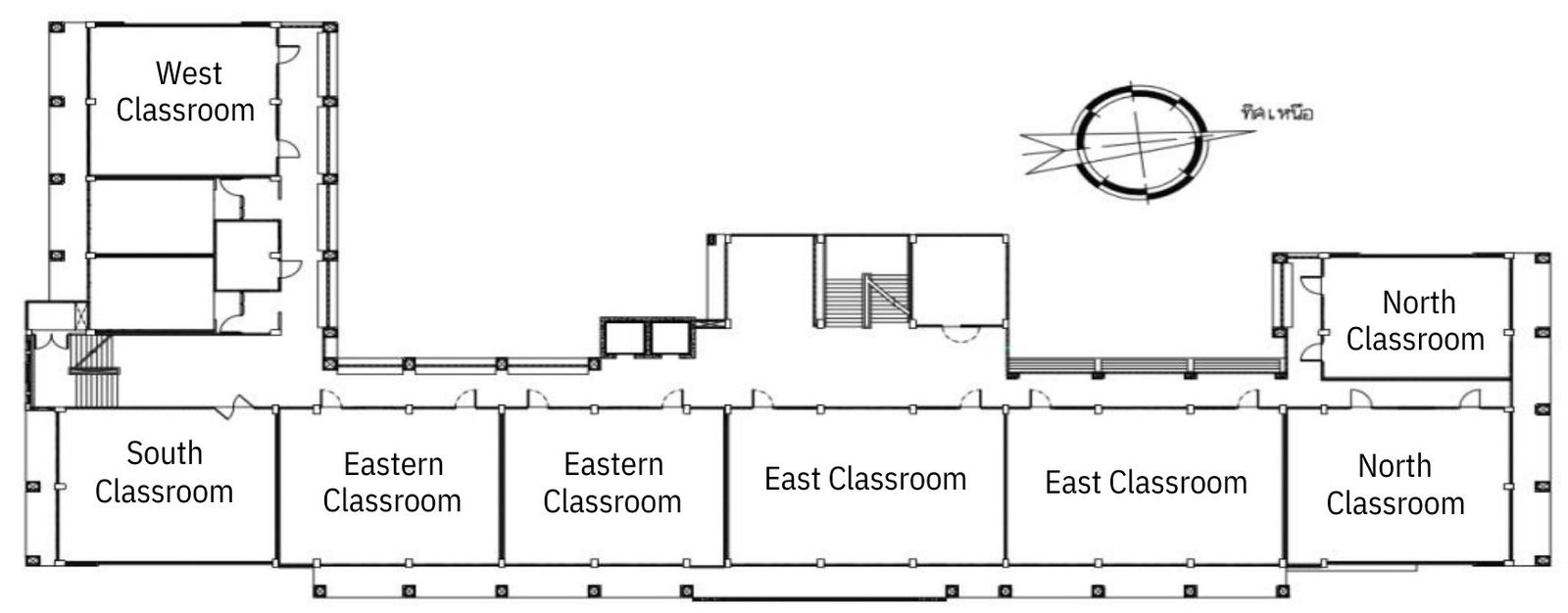 Figure 1
Figure 1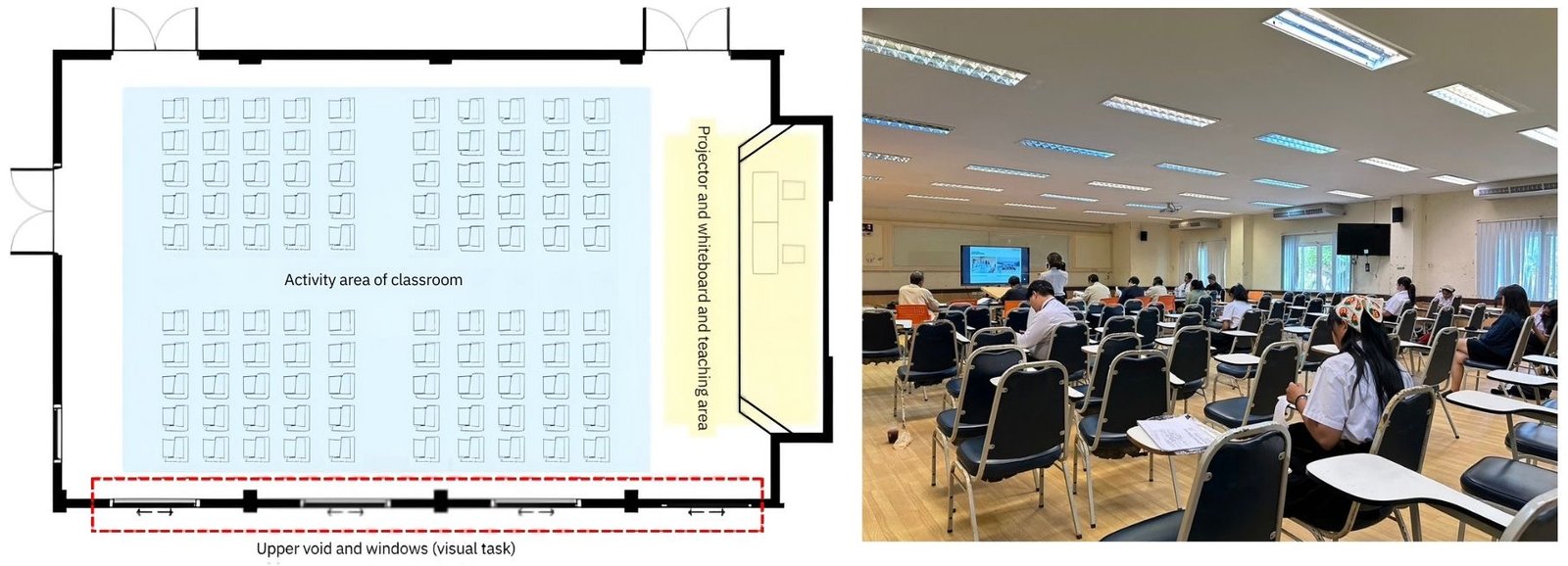 Figure 2
Figure 2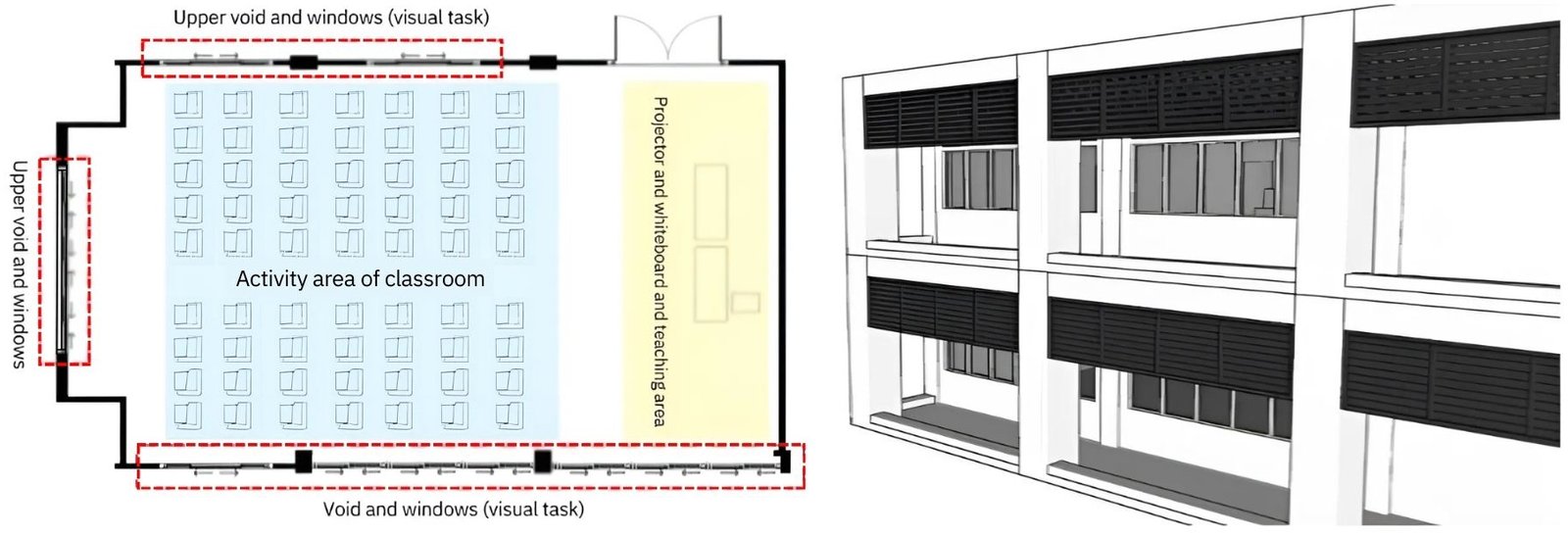 Figure 3
Figure 3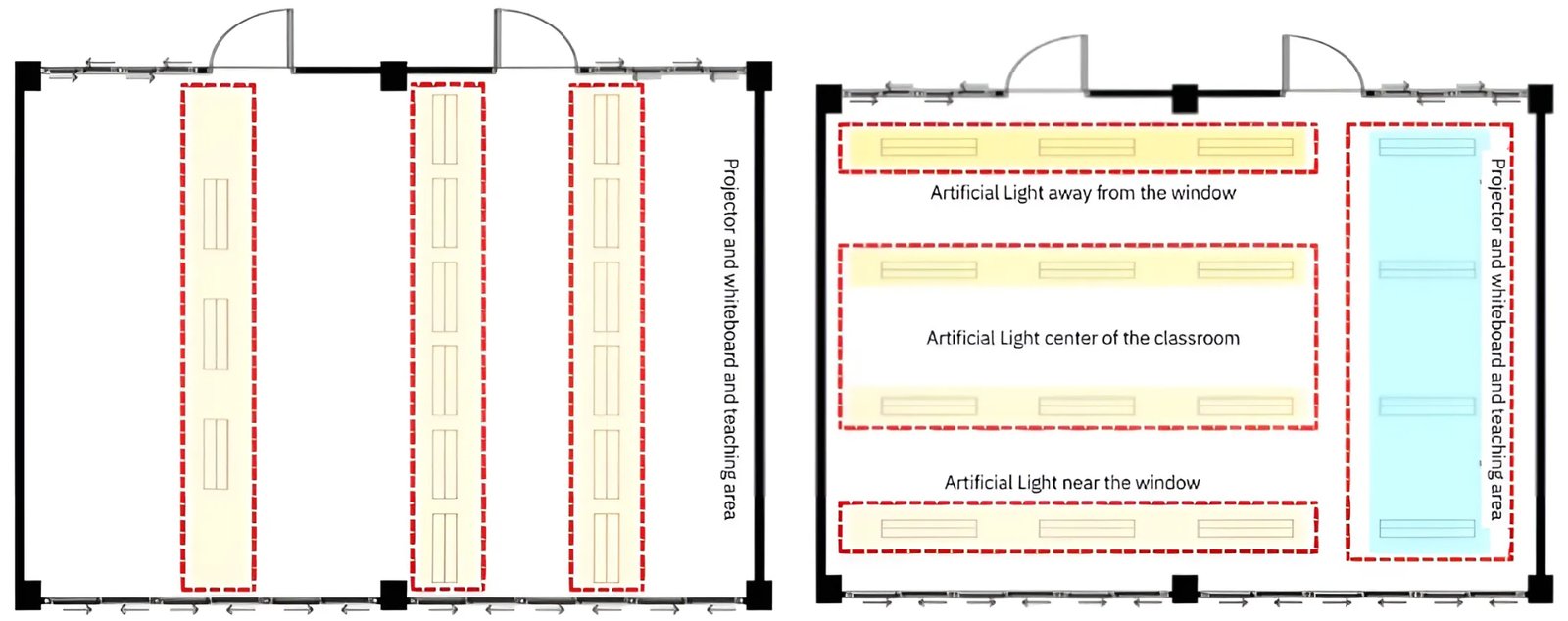 Figure 4
Figure 4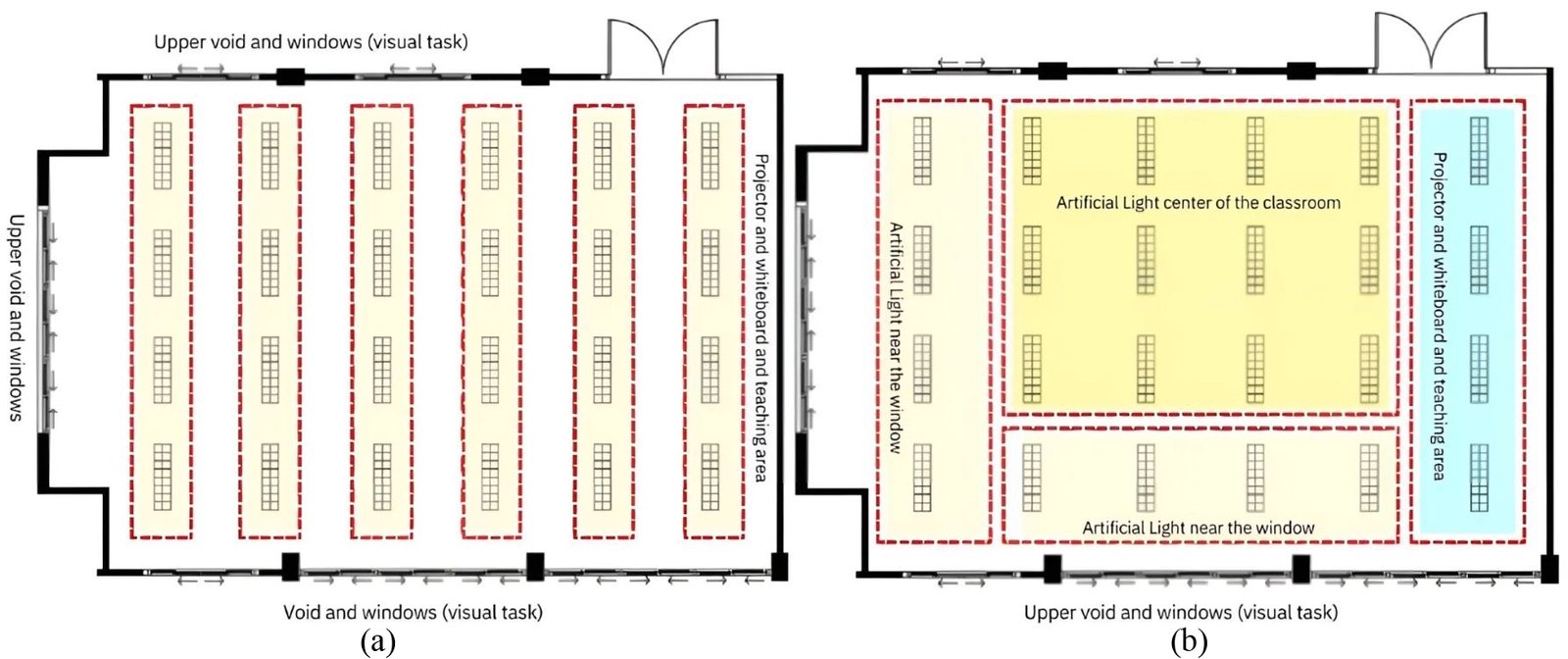 Figure 5
Figure 5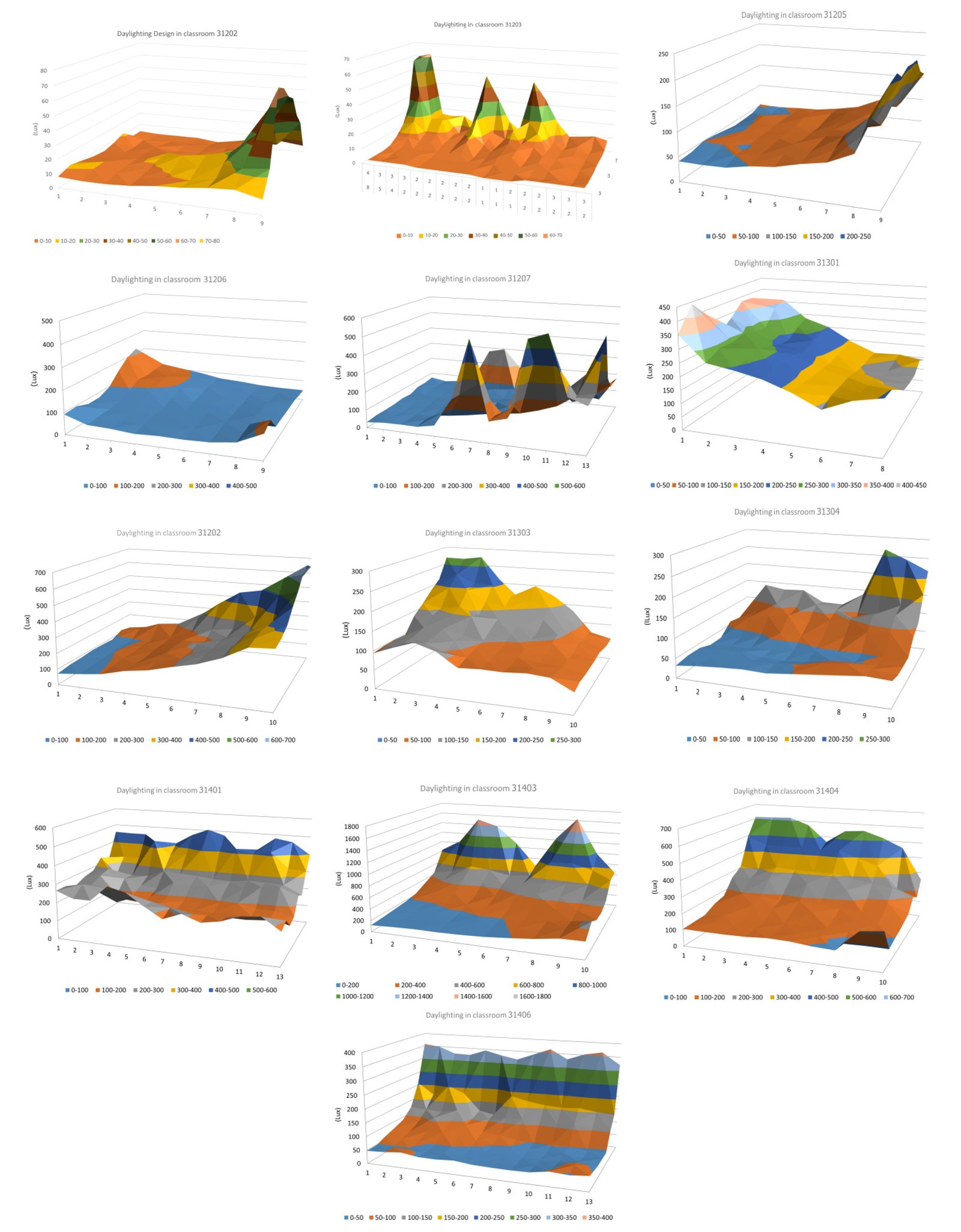 Figure 6
Figure 6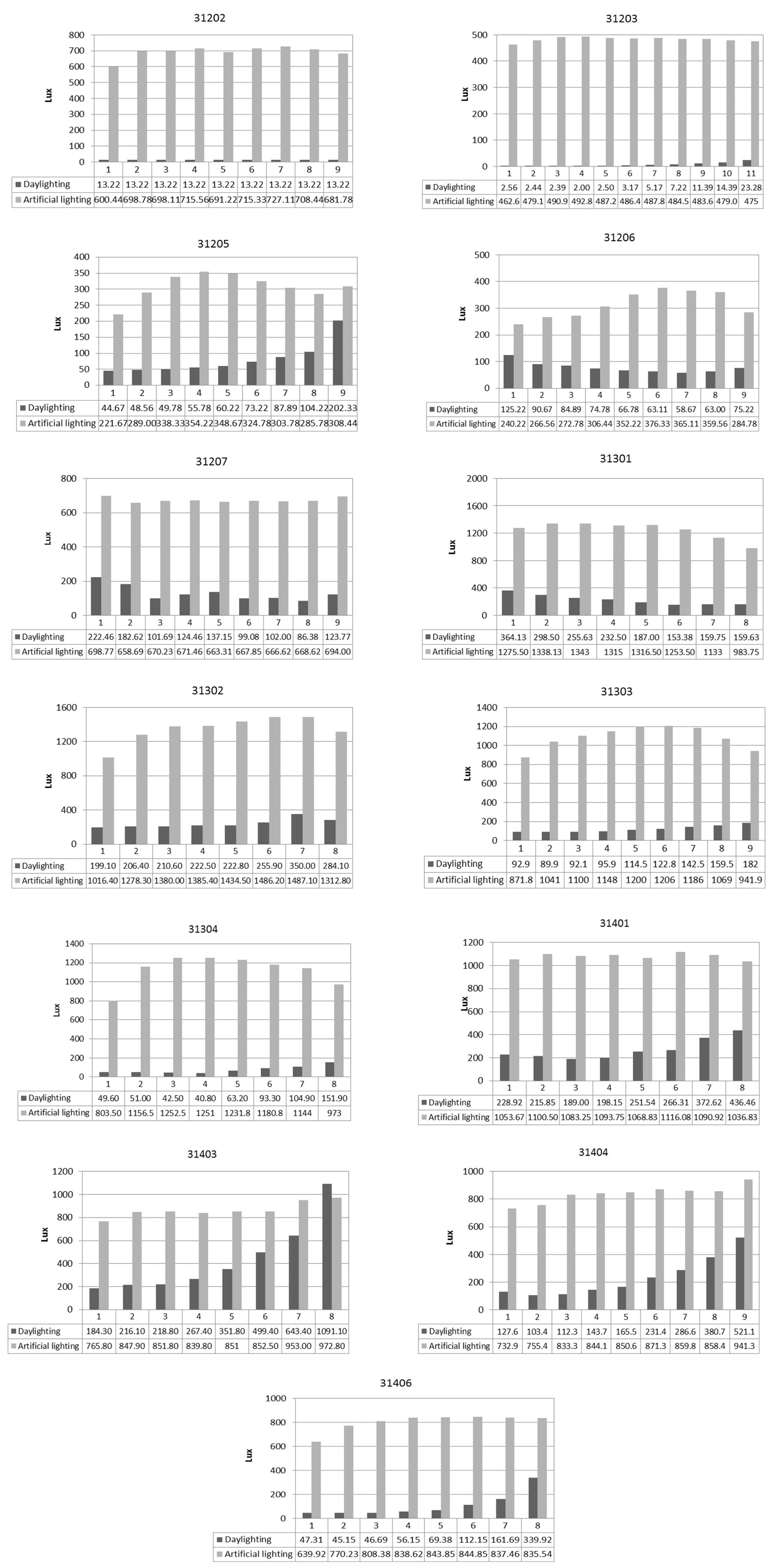 Figure 7
Figure 7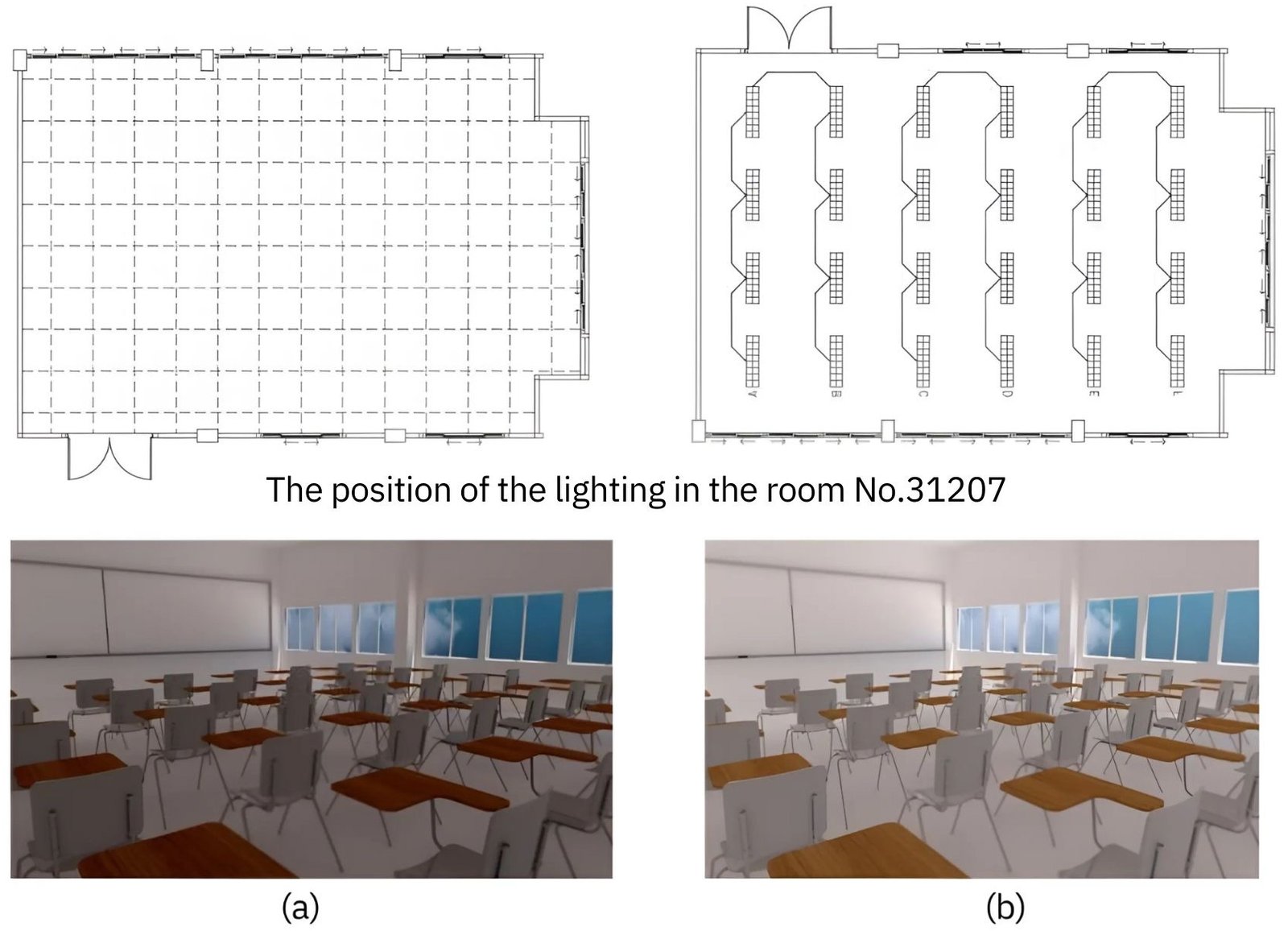 Figure 8
Figure 8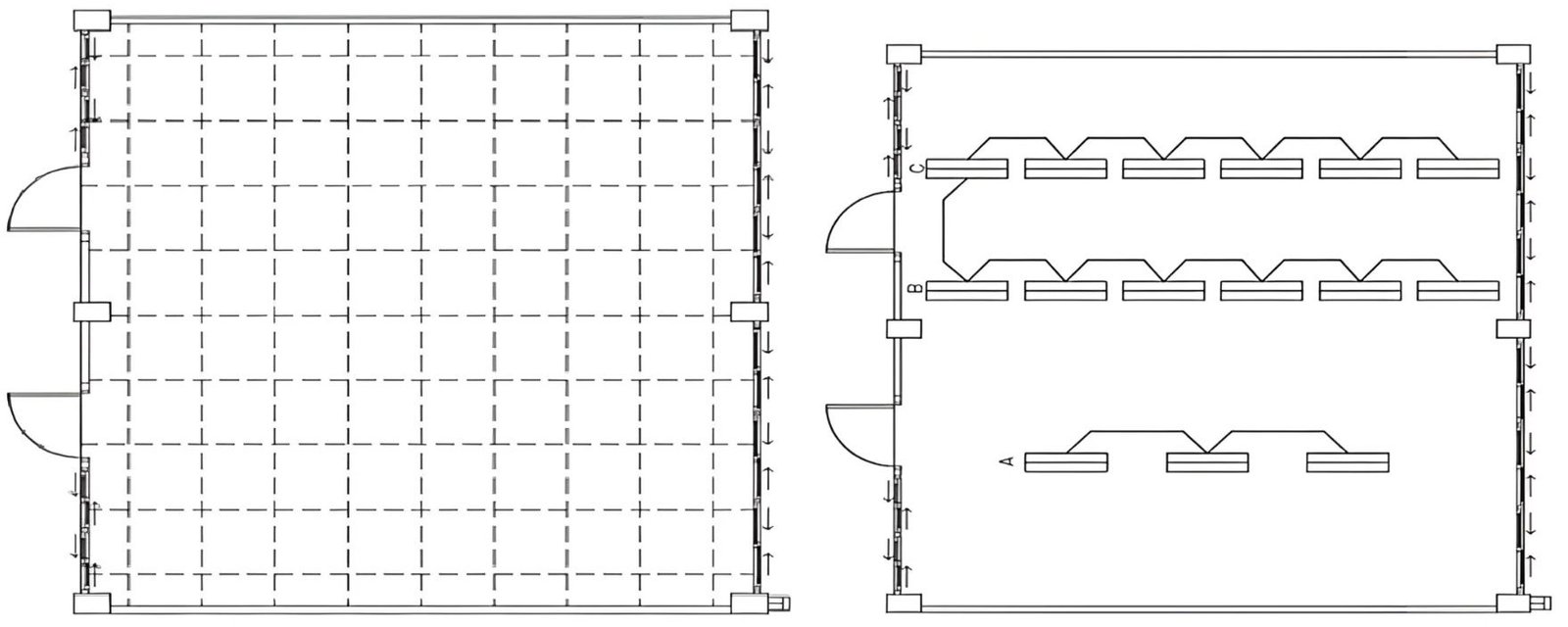 Figure 9
Figure 9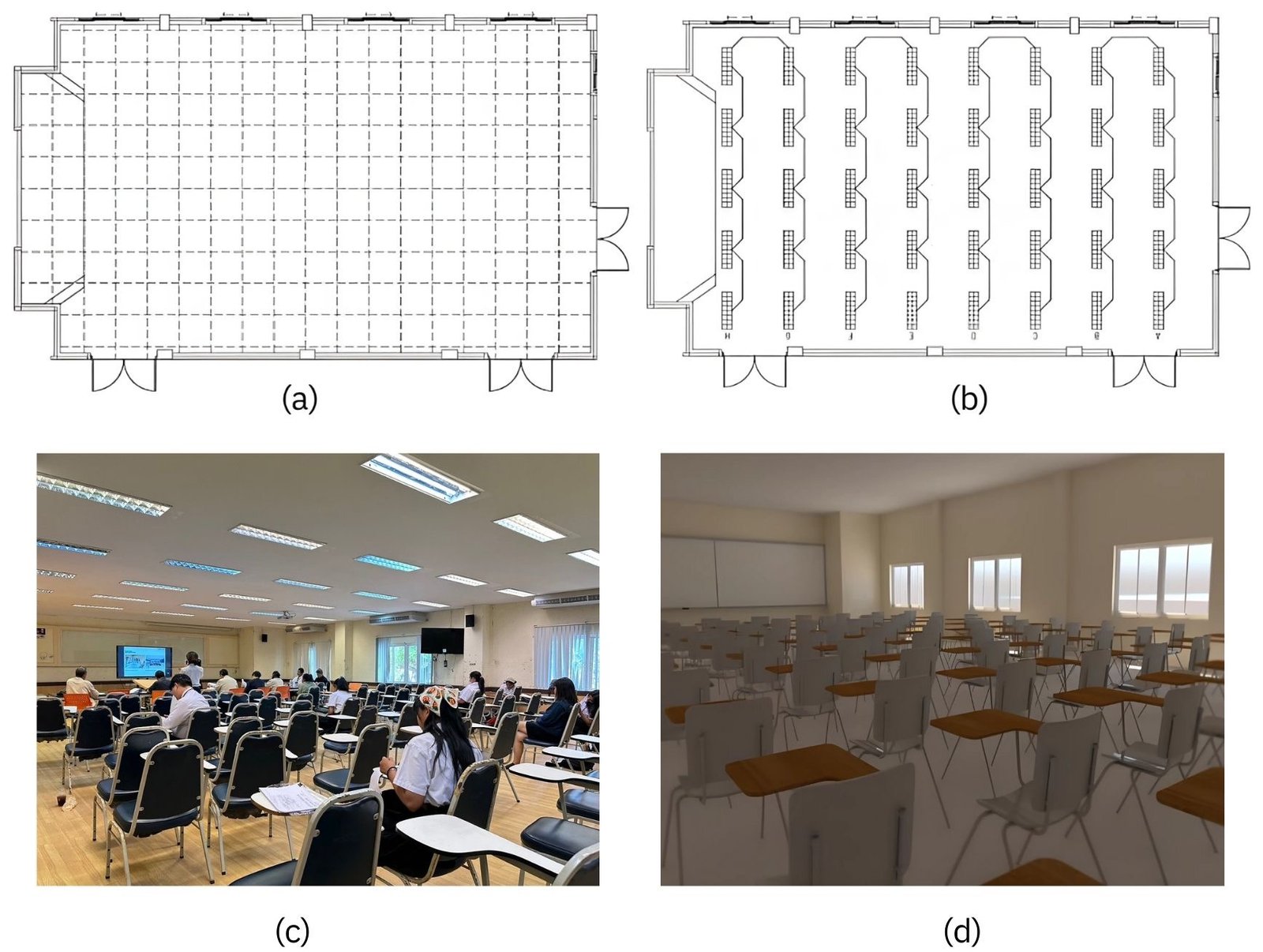 Figure 10
Figure 10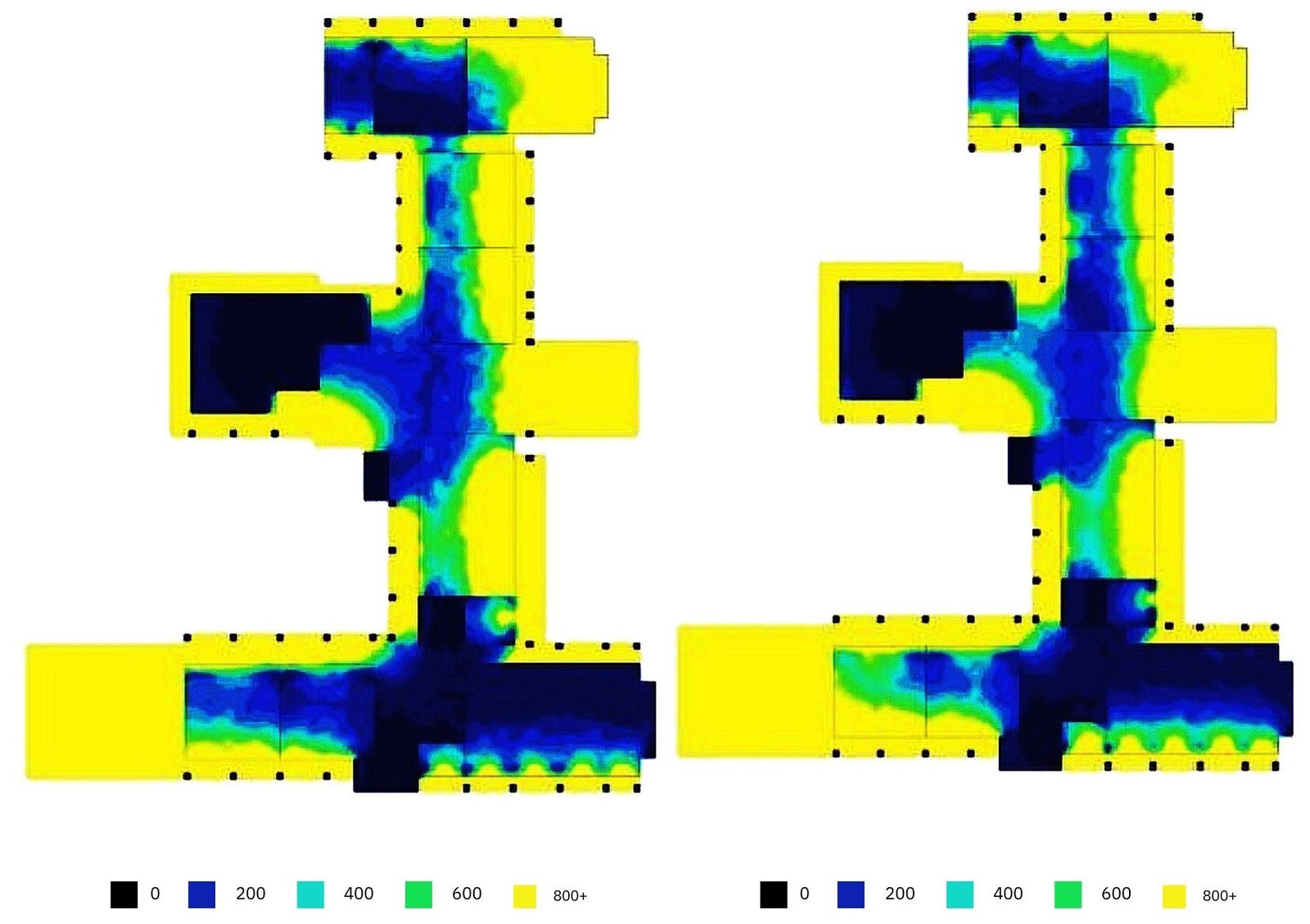 Figure 11
Figure 11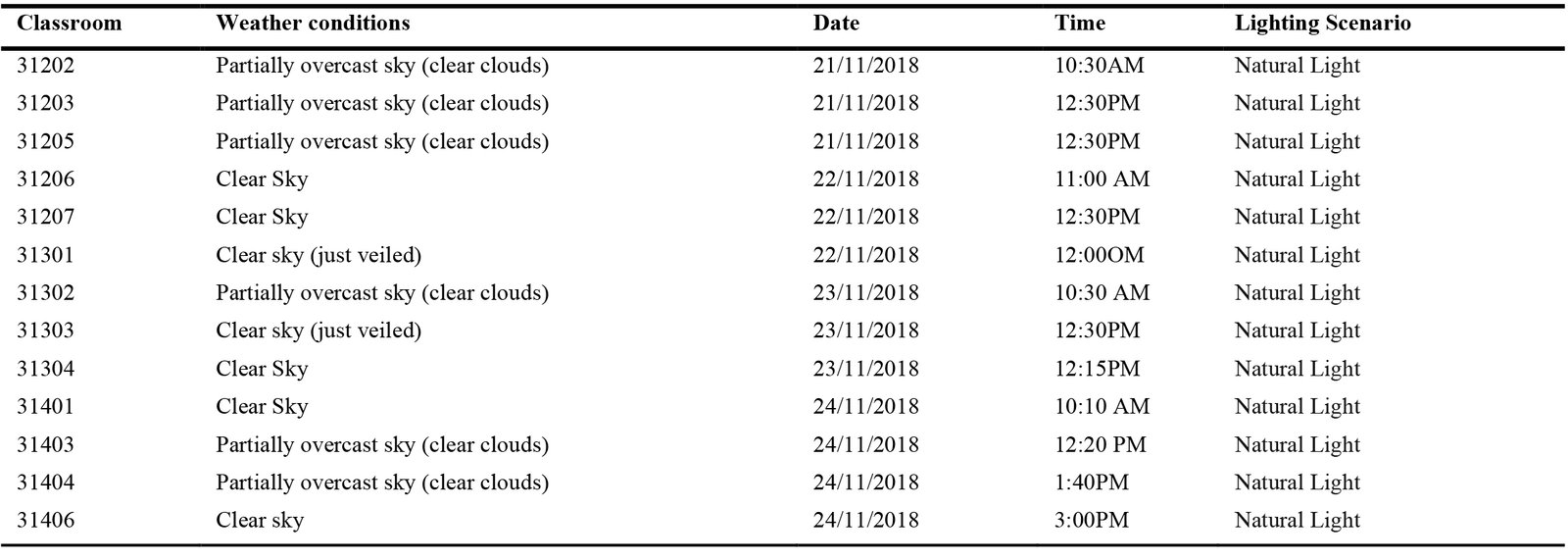 Table 1
Table 1 Table 2
Table 2 Table 3
Table 3 Table 4
Table 4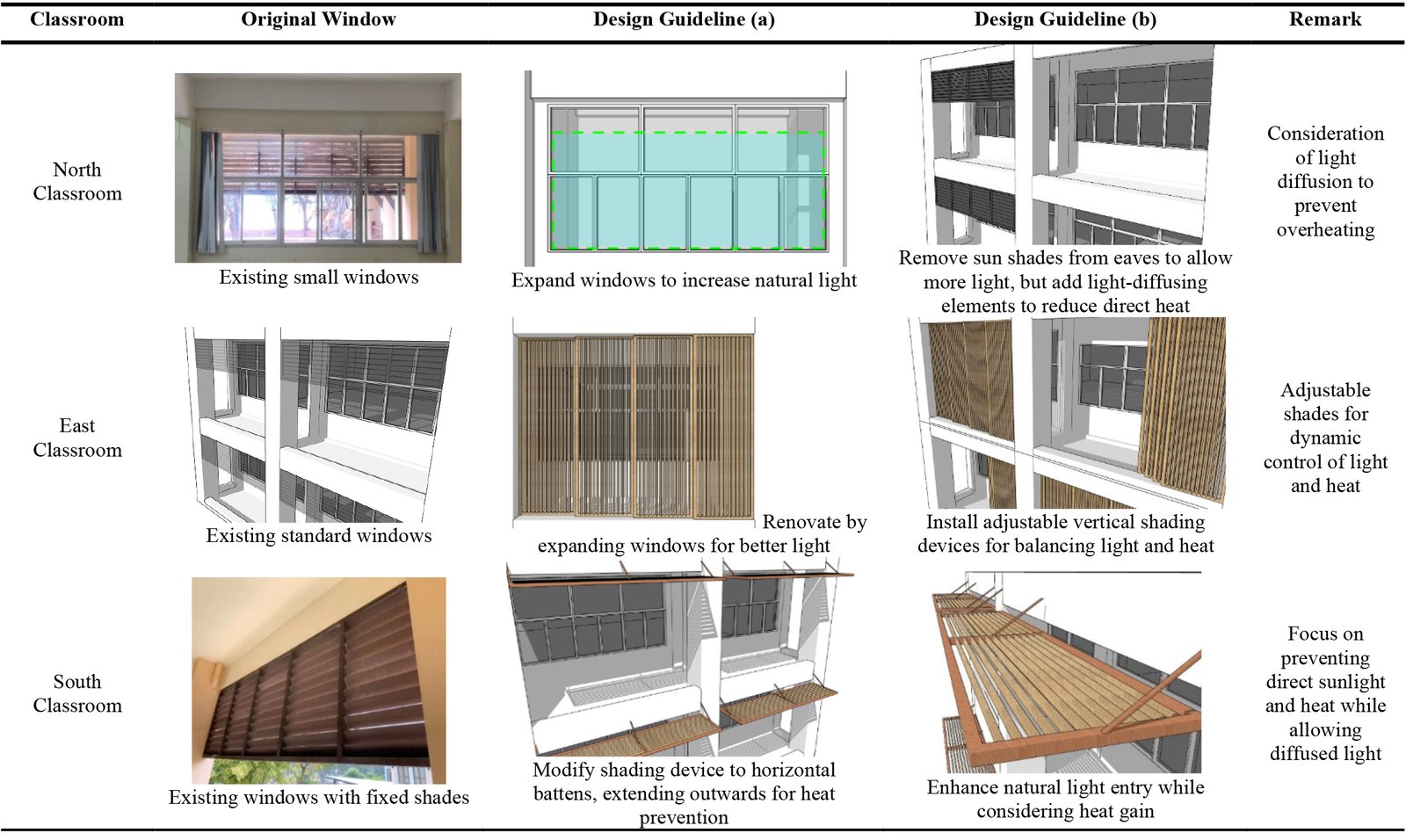 Table 5
Table 5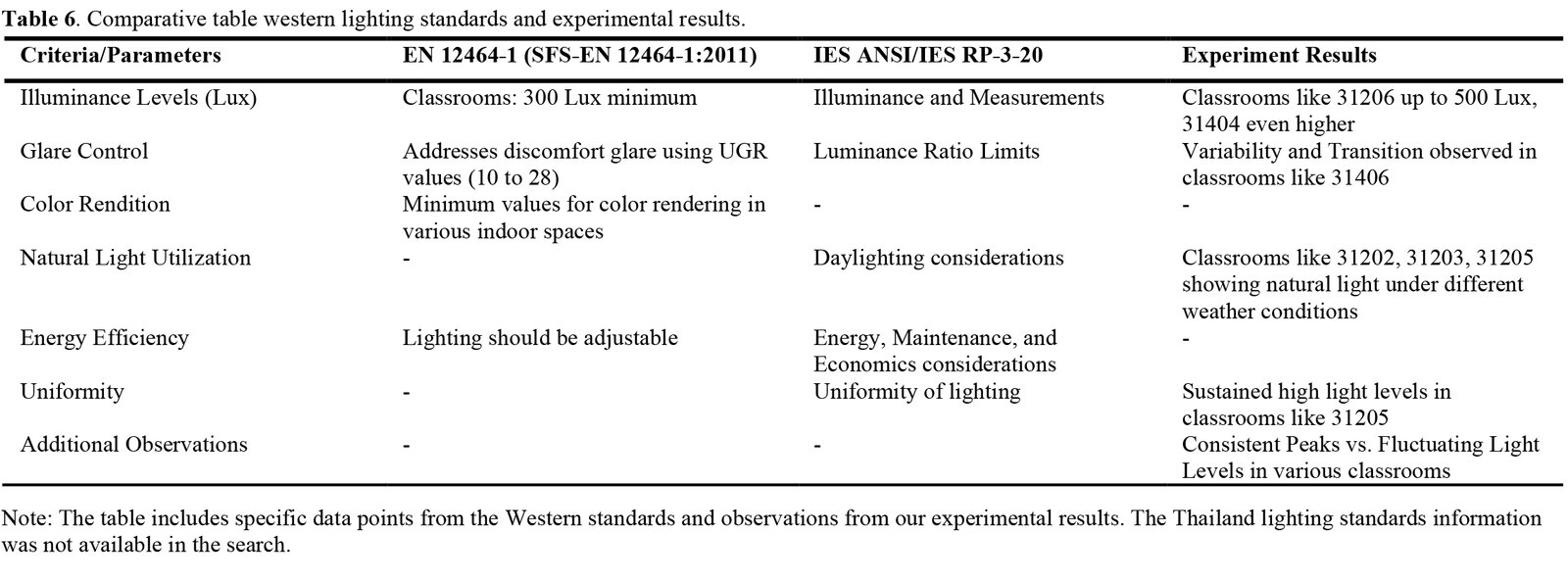 Table 6
Table 6 Table 7
Table 7


